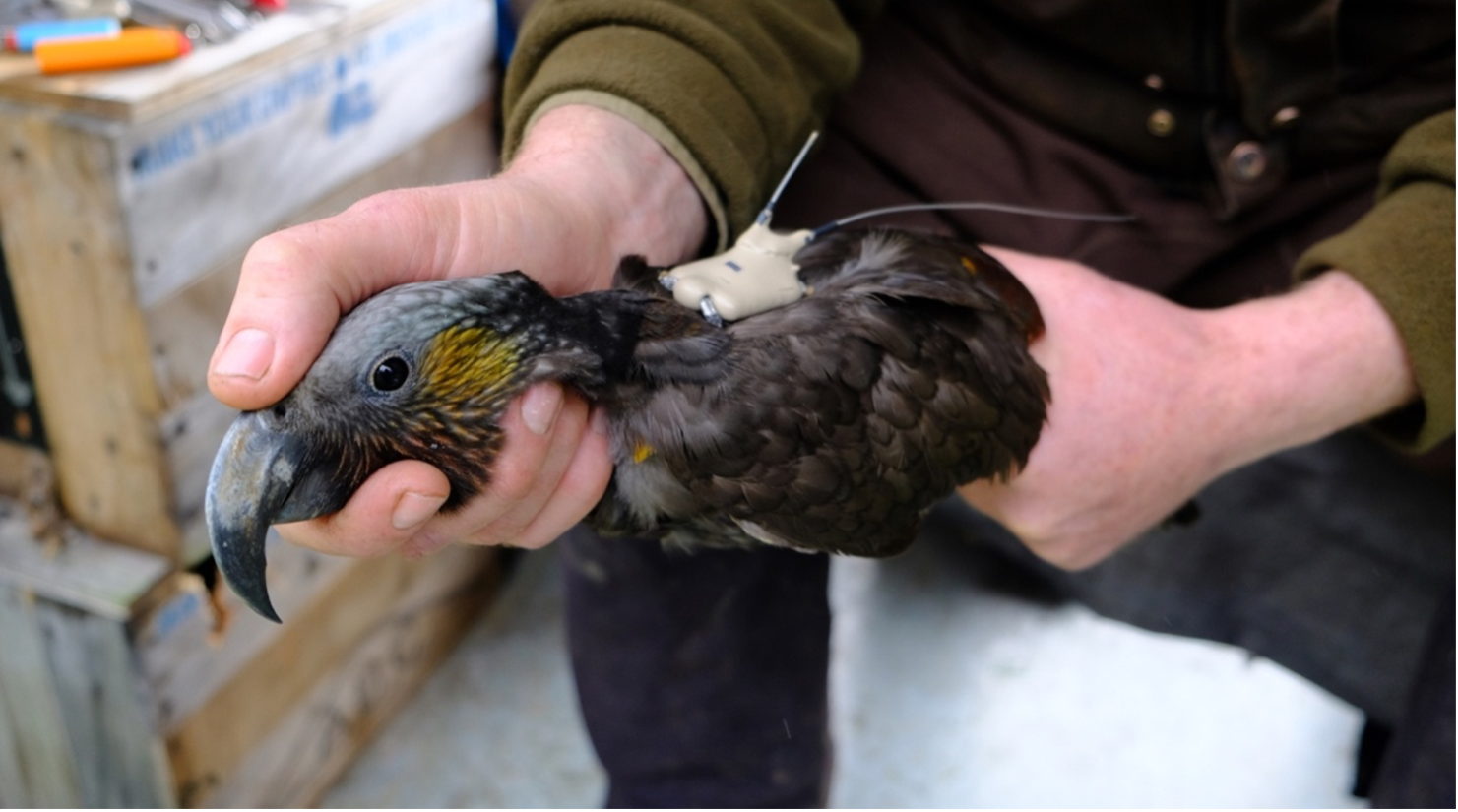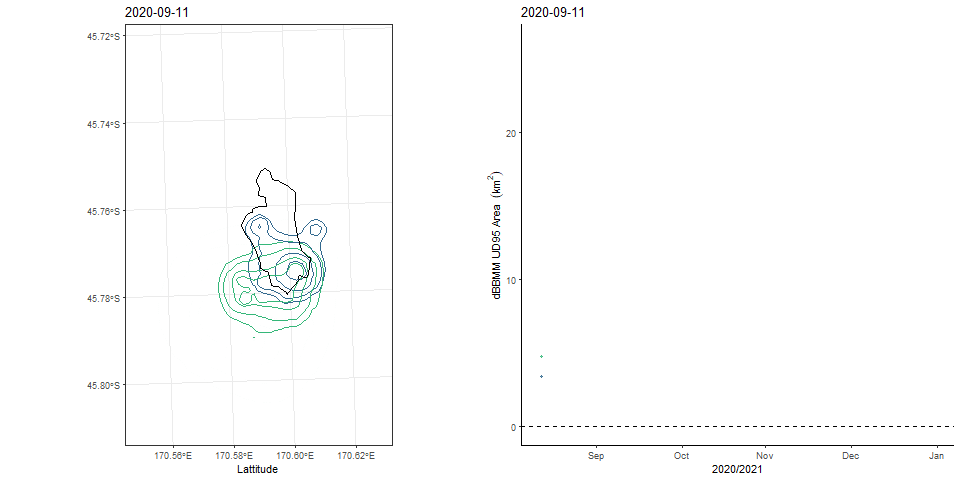I’m a PhD candidate in Mathematical Sciences at the Queensland University of Technology (QUT) in Brisbane, Australia, and I am researching animal movement methods and applications. In my research I have explored space use and home range approaches, some hidden Markov modelling, and step selection functions and their extensions, and I am also interested in the application of machine learning to ecological problems. I work at the interface between developing methodology and applications to scientific and conservation questions, and I am fascinated by the decision-making processes that lead to animal movement, from the level of neurobiology to population dynamics.
Before getting into ecology, and the some of data analysis methods that underlie it, I studied a Bachelor of Engineering (Naval Architecture) with Honours at Flinders University in Adelaide, South Australia and the Australian Maritime College in Launceston, Tasmania. During this degree I thoroughly enjoyed the research endeavour through my Honours project with Gregor MacFarlane, titled: Ship-Generated Solitons and the Dynamic Vessel Response as a Function of Blockage. You can read the article here and watch a video of the research here.
The process of diving deeply into a topic, receiving valuable mentorship, and exploring the frontier of knowledge ultimately sparked my interest in a scientific career.

Following my engineering degree I volunteered in the USA with Montana Fish, Wildlife and Parks with the Wolf Program, which led me towards a Master of Science in Wildlife Management at the University of Otago. For my MSc thesis with Phil Seddon, Mike Paulin and Mariano Rodríguez Recio, we GPS-tracked kākā (Nestor meridionalis) in Orokonui Ecosanctuary, Dunedin, New Zealand.

We assessed the kākā’s space use and resource selection (via step selection functions), and how that changed throughout time. There were clear age-related patterns of both space use and resource selection, which correlated with higher mortality observations for younger kākā. The full thesis can be found here. The chapter about (dynamic) space use analyses has been published in Conservation Science and Practice and you can read the full paper here, or check out the description in the Research section of this website.

We also assessed how the GPS devices that we used, which were Lotek PinPoint GPS VHF tags that used the SWIFT-fix snapshot algorithm were affected by vegetation and topography. This work was published in Animal Biotelemetry and you can read the full paper here, or check out the description in the Research section of this website.
To further explore the underlying models of animal movement, I am doing a PhD in Mathematical Sciences at the Queensland University of Technology (QUT) in collaboration with the Commonwealth Scientific and Industrial Research Organisation (CSIRO). My supervisors, Michael Bode and Christopher Drovandi at QUT, and Andrew Hoskins and Dan Pagendam at CSIRO, collaborators, Jonathan Potts and Conor Hassan, and I have delved further into step selection functions, particularly in relation to incorporating fine-scale temporal dynamics and using alternative approaches to represent and model the step selection process. We applied these models to water buffalo, which are an introduced and damaging species in northern Australia. CSIRO has led a project called ‘SpaceCows’, which has involved the data collection, analysis and management advice for water buffalo in the Northern Territory and feral cattle in Cape York, Queensland. I was lucky enough to head out and assist with the catching of water buffalo in the Northern Territory, which was quite a thrilling experience!
The Australian Broadcasting Corporation (ABC) has covered the SpaceCows project in a news article and a Landline episode (I make an appearance for about 5 seconds from 2:43, even holding a clipboard…).
This work has been published in Ecography and you can read the full paper here, or check out the description in the Research section of this website.

Some examples of the research that I have led are shown in the Research section of this website, but I have also collaborated on projects with a few other incredible species!

